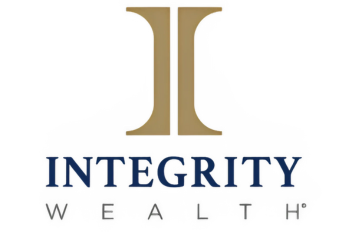Income Planning for Retirement: Balancing Growth and Stability

Planning your income for retirement can feel overwhelming, but it is a crucial step to ensure comfort in your later years. The key is to start early and understand the different sources of retirement income. You might rely on a mix of savings, investments, and Social Security benefits to meet your lifestyle needs. Each source can play a significant role in how you maintain your standard of living in retirement.
Creating a robust financial plan involves setting specific retirement goals. Think about what age you plan to retire, your estimated lifespan, and how much income you'll need annually. By considering these factors, you can determine how much money to save now. Additionally, consider tax impacts, inflation, and how they might affect your future income.
Crafting a retirement plan requires careful consideration of investment strategies and potential market changes. Understanding these elements helps optimize your monthly income in retirement and allows for adjustments based on current financial conditions.
Key Takeaways
- Income sources may include savings, investments, and Social Security.
- Setting clear retirement goals helps target how much to save.
- Investment strategies can be crucial for income optimization.
Understanding Retirement Income
Retirement income involves many components that work together to support you during your non-working years. It's crucial to diversify income sources to manage risks and ensure financial stability.
Components of Retirement Income
Various components contribute to your retirement income. Pensions provide a steady income if you have access to a pension plan through your workplace. These are often based on your salary and years of service. Social Security is another critical source; it can make up a significant part of your income, but the amount depends on your earnings history and age of retirement.
Annuities offer a stream of payments that can provide financial security, with variations like fixed or variable annuities to consider based on your needs. Interest and dividends from investments such as bonds, stocks, or mutual funds can also supplement your income. These payments can vary, influencing your total income stability. Planning should include projections of each source to understand potential cash flow. It's important to consider how these sources might integrate with your other income streams.
Diversifying Income Sources
Diversifying your income sources can help manage risks associated with market fluctuations and ensure a more reliable income stream. Relying solely on one type of income could leave you vulnerable to economic changes. Combining Social Security, pensions, and annuities can potentially offer a mix of predictable and flexible income, reducing the impact of market volatility.
Investing in a variety of stocks and bonds can also balance expected returns with potential risks. Creating multiple streams means that if one source falters, others may help cushion the impact. You should assess your risk tolerance and financial goals to create a balanced mix that aligns with your retirement needs. Diversifying helps in crafting a plan that's robust across different economic scenarios.
Setting Financial Goals for Retirement
Planning for retirement involves careful goal-setting that considers your lifestyle, savings, and the timeline you are aiming for. Evaluating these aspects will guide you in forming a solid plan.
Defining Your Retirement Goals
To start, consider your desired lifestyle during retirement. Do you want to travel, pursue hobbies, or relocate? These preferences will impact your financial needs.
Create specific goals, like buying a vacation home or funding a grandchild’s education. Use the SMART criteria : Specific, Measurable, Achievable, Relevant, and Time-bound. For instance, aim to save a specified amount for healthcare expenses.
Establishing milestones can motivate you. Break larger goals into smaller, manageable steps. This method may help maintain focus and measure progress.
Establishing a Time Horizon
Your time horizon indicates how long you have to save before retirement. It's crucial as it impacts how aggressively or conservatively you might invest.
A longer time horizon might allow for more investment risks, potentially leading to greater growth . Conversely, a short time horizon may necessitate a more cautious approach to preserve capital.
Consider life expectancy and potential healthcare costs. Using a calculator or consulting with a financial advisor helps estimate how long your savings might need to last.
Assessing Risk Tolerance and Growth Potential
Risk tolerance defines your comfort level with investment risks and potential losses. Take into account your age, economic situation, and long-term commitments.
Balancing risk and growth potential is key. While stocks offer higher returns, they also come with greater risk. Diversifying investments¹ can help manage risks while still allowing for growth.
Regularly review your risk tolerance , especially when significant life changes occur. This helps ensure your investments align with your goals and current circumstances. Consult a professional for personalized advice tailored to your situation.
Planning Your Retirement Savings
Getting a head start on your retirement savings can make a significant difference in achieving financial confidence. Selecting the right retirement accounts and understanding key principles, like the 4% rule, may further guide you in managing your resources effectively.
Importance of Saving Early
Starting your savings journey early in life can provide a valuable edge. The idea of compound interest means your money can grow over time, multiplying with each passing year.
For instance, if you save just a little bit each month starting in your 20s, you might end up with more than someone who started later and saved more money. It’s about time in the market, not timing the market.
By saving early, you also have more flexibility. You can adjust your contributions based on life changes, reducing stress if you need to save less during certain periods. This flexibility allows your savings to align with your financial goals and needs.
Choosing the Right Retirement Accounts
Selecting the appropriate retirement accounts is crucial. Traditional IRAs and 401(k) plans are popular choices. Traditional IRAs allow for tax-deferred growth, meaning you pay taxes later, usually upon withdrawal.
401(k) plans, often offered by employers, also provide tax advantages and potential employer matching, which can accelerate growth. Roth IRAs , another option, involve contributions made with after-tax dollars, allowing for tax-free withdrawals under certain conditions.
Each account type has its pros and cons, and the right choice depends on your current tax situation, expectations for future taxes, and retirement goals. Consulting resources or professionals can guide this decision process effectively, helping tailor it to your personal circumstances.
Understanding the 4% Rule
The 4% rule is frequently cited in retirement planning. It suggests that by withdrawing 4% of your savings in the first year of retirement, adjusting for inflation in subsequent years, your funds might last through a typical retirement span.
This approach is based on past market performances and provides a framework, not a guarantee. It assumes a balanced portfolio, usually of stocks and bonds, which may or may not suit every situation.
Different factors can influence how well the 4% rule works for you. Variations in investment returns, life expectancy, and personal spending needs require a close analysis. Adapting this rule with guidance from reliable financial data and expert opinions could enhance its relevance to your plans.
Investment Strategies for Retirement
For retirement investing, it is crucial to think about how you will build a balanced portfolio, choose income-producing investments, and find the right mix of safety and growth. These strategies can help you manage your retirement funds wisely.
Building a Retirement Portfolio
A well-rounded retirement portfolio requires diversification among various asset classes. You might include stocks for potential growth, bonds for more stability, and possibly real estate or other investments depending on your risk tolerance.
Consider organizing your investments into different "buckets" based on when you plan to use them. This means having some funds easily accessible for near-term needs and others invested for long-term growth. Your asset allocation should reflect your overall retirement timeline and financial objectives. It’s a good idea to adjust this as your needs change over time.
Income-Producing Investments
Creating a reliable income stream is vital once you retire. Some investments can help you achieve this. Think about bonds, dividend-paying stocks, or real estate investment trusts (REITs). Each of these can provide regular income, but they come with different levels of risk.
You might also explore annuities, which can offer a set income over a defined period. Remember, the key here is to compare the potential returns and risks. It may be wise to consult a financial advisor to tailor your income-producing strategy to your specific goals and risk tolerance .
Balancing Safety and Growth
Striking a balance between safety and growth in your retirement investments is important. Stocks can grow your portfolio over time, but they also come with risk. On the other hand, bonds are generally less risky but may offer lower returns.
You might want to keep a portion of your portfolio in bonds or other less volatile investments. This can help protect your assets from market swings. As you age, it may be beneficial to gradually shift towards safer investments to preserve your capital. Adjusting your investment mix based on your age and comfort with risk can help maintain this balance.
Optimizing Social Security Benefits ² ³
To make the most out of Social Security benefits, consider the best age to claim benefits and use strategies to maximize the amount you receive. Thoughtful planning can enhance the reliability of your retirement income.
Determining the Best Age to Claim Social Security
Choosing when to start your Social Security benefits is crucial. You can begin as early as age 62, but waiting until full retirement age (between 66 and 67, depending on birth year) may increase your monthly benefits.
Delaying beyond full retirement age, up to 70 years old, can further boost benefits. These delayed retirement credits could raise your benefits by about 8% per year. Evaluate your health, financial needs, and life expectancy when deciding.
If you start early, payments might be lower. However, starting when you have less income elsewhere might be beneficial. It's important to consider both immediate needs and long-term income security.
Strategies to Maximize Benefits
Coordinating Social Security with other retirement income sources, like pensions, can help maximize benefits. By adopting a strategic withdrawal plan, you might reduce overall tax burdens. For instance, managing when to take distributions from a 401(k) or IRA can keep you in a lower tax bracket.
If married, you could explore spousal benefits. Planning effectively with your spouse might lead to higher collective benefits. Meanwhile, tracking your earnings record helps ensure you receive full entitlement.
Consider the impact of continued employment while receiving Social Security. Earning income before reaching full retirement age may reduce benefits, so weigh the pros and cons. Tailor these strategies to complement your financial goals and retirement plans.
Tax Considerations in Retirement
As you prepare for retirement, understanding how taxes can impact your income is crucial. It’s important to manage taxes effectively and stay informed about tax laws to optimize your financial situation.
Managing Taxes on Retirement Income
Retirement income can come from a variety of sources, and each source may be taxed differently. Social Security benefits , for example, might be taxed by the federal government based on your combined income. Up to 85% of benefits could be taxable.
Withdrawals from traditional retirement accounts, like 401(k)s and IRAs, are typically taxed as ordinary income. It's wise to consider a Roth IRA , as qualified withdrawals are tax-free, which could help lower your taxable income in retirement.
You might also have income from pensions or investment earnings , which require careful planning to avoid potential taxes. Considering tax-efficient withdrawal strategies, like withdrawing from taxable accounts first or spreading out distributions, may help minimize taxes over time.
Navigating Tax Laws and Regulations
Understanding tax laws and regulations is essential for effective retirement planning. The U.S. tax system can be complex, and state taxes vary widely. Some states fully tax retirement income, while others may offer partial exemptions.
Keeping up with tax changes requires diligence. Consulting with a tax professional or financial advisor is crucial to ensure you comply with current regulations and take advantage of available deductions or credits.
Pay attention to required minimum distributions (RMDs) . Failing to withdraw the mandatory minimum by the age of 73 (as of 2024) could result in substantial penalties. Planning withdrawals carefully can help you avoid unnecessary taxes and penalties.
Consider tax-efficient gifting or charitable donations, which may provide tax benefits. Make sure to use up-to-date resources or consult professionals for the best tax strategies tailored to your individual circumstances.
Adjusting for Inflation and Market Conditions
When planning for retirement income, it's vital to understand how inflation and market conditions can impact your savings. Preparing for these factors can help you protect your purchasing power and adjust strategies as needed.
Protecting Against Inflation
Inflation erodes the value of money over time, which can reduce your purchasing power during retirement. To mitigate this, you could consider investing in assets that have historically appreciated with inflation, like stocks or real estate. Diversifying your portfolio might help balance risks and returns.
TIPS (Treasury Inflation-Protected Securities) are government-backed investments that adjust with inflation and could be a part of your strategy. While they don't offer high returns, they provide a layer of security against inflation.
Another approach may include building a flexible budget. By periodically reviewing your spending habits and making necessary adjustments, you could better cope with inflation's impact. Adjusting withdrawal rates from your savings based on inflation helps maintain your financial stability.
Responding to Market Volatility
Markets can be unpredictable, affecting the value of your investments. Being prepared means you might reduce risks by diversifying investments across different asset classes. Bonds, stocks, and real estate can each react differently to market conditions, providing a cushion against volatility.
Maintaining a flexible withdrawal strategy can also be advantageous. You might adjust your withdrawal amounts based on market performance to avoid depleting your savings too quickly during downturns. Having an emergency fund could offer extra support during volatile periods.
Investing in funds that adjust based on market conditions, such as target-date funds, can provide a balanced approach. It's critical to regularly review your portfolio and make changes as necessary, keeping your risk tolerance and retirement goals in mind.
Retirement Income Distribution Strategies
Creating a retirement income plan involves considering key strategies to manage withdrawals efficiently. This process can impact how long your savings last throughout retirement. It's essential to determine a sustainable withdrawal rate and understand the sequence of pulling money from various accounts.
Determining a Sustainable Withdrawal Rate
Choosing a withdrawal rate is critical in making your retirement savings last. A common guideline is the "4% rule," which suggests taking 4% of your retirement savings in the first year, then adjusting for inflation annually. This approach aims to balance your need for income with preserving your savings.
Not all strategies fit everyone. Some prefer a fixed percentage of their portfolio value each year, offering flexibility but requiring careful monitoring of market conditions. Others choose a fixed dollar amount, providing consistent income but potentially reducing the longevity of your funds if not adjusted for inflation.
Consider your lifestyle, expected expenses, and market conditions. It's often helpful to consult a financial professional to tailor a strategy to your specific needs and circumstances.
Sequencing Withdrawals from Different Accounts
When withdrawing from different accounts, consider the tax implications. Typically, it's advised to withdraw from taxable accounts first, then tax-deferred accounts like traditional IRAs or 401(k)s, and finally, Roth accounts. This sequence may reduce your overall tax burden over time, maximizing your income.
Be mindful of your retirement income goals and tax brackets. Drawing from tax-deferred accounts too early might push you into a higher bracket, while delaying Roth withdrawals can enable growth without immediate tax implications.
The right sequence can vary based on individual situations. Consulting with a tax advisor or financial planner can help you decide on the best approach for your retirement income distribution strategy.
Healthcare and Long-Term Care Planning
Healthcare and long-term planning are important for securing a comfortable retirement. It's essential to understand potential medical expenses and explore various insurance and care options.
Estimating Medical Expenses
During retirement, medical expenses can grow and become a major part of your budget. It helps to plan for these costs by considering Medicare premiums, out-of-pocket costs, and prescription drugs . Start by examining your current health status and age, as these factors can influence future expenses.
Creating a budget for potential healthcare costs may involve considering averages, but remember, individual experiences can vary. An estimate from the Employee Benefit Research Institute suggests that a retired man might need about $106,000 saved to cover half of his healthcare costs during retirement under a typical Medigap plan. Always consider inflation and unexpected medical needs when planning.
Exploring Insurance and Care Options
You have several options to manage healthcare costs, including Medicare, Medigap , and long-term care insurance . Medicare covers some healthcare services, but it does not cover long-term care, which can be expensive. It's crucial to explore supplemental insurance options like Medigap or Medicare Advantage for additional coverage.
For long-term care, you could look into insurance plans that offer future care provisions. Some plans have options with no elimination periods and higher monthly benefits. Including family in decision-making can also be beneficial, as personal support may reduce professional care costs. Personal circumstances and preferences will largely determine the best approach for you. Always consult with a licensed professional when considering insurance options.
The Role of Advisory and Brokerage Services
Choosing the right advisory and brokerage services plays a crucial part in shaping your retirement plan. Financial advisors and brokerage services can offer guidance tailored to your needs and preferences.
Choosing a Financial Advisor or Planner
When selecting a financial advisor, consider their qualifications and experience. Advisors with certifications like Certified Financial Planner (CFP) or Chartered Financial Analyst (CFA) can indicate expertise. You should also assess how they are compensated (e.g., fee-only, commission-based) because this can influence their advice.
It's important to discuss your retirement goals and risk tolerance with potential advisors. They may use this information to create strategies aligning with your aspirations. Schedule a meeting to ask questions about their approach to investment and income planning to ensure compatibility with your objectives.
Evaluating Fidelity Advisors and Brokerage Services
Fidelity offers a range of financial advisory and brokerage services that can support retirement planning. With Fidelity, you might access tools for managing investments and resources for understanding market trends. Their advisors may help tailor investment strategies based on your specific retirement goals and timeline.
Always compare Fidelity services with other providers to ensure they fit your needs. Look at fees, available resources, and customer support. Whether you're looking for managed accounts or self-directed investing options, ensure any service aligns with your financial situation and long-term goals.
Lifestyle Considerations and Retirement Planning
Retirement planning involves thinking about how you want to spend your time and money once you stop working. Two important areas to focus on are travel and leisure activities, as well as the possibility of retiring early.
Planning for Travel and Leisure
When planning for retirement, it's important to consider how travel and leisure fit into your lifestyle. Visiting new places and enjoying hobbies can make retirement fulfilling. Begin by outlining your travel goals and interests.
Create a budget for travel expenses, including transportation, accommodation, and activities. Consider how often you plan to travel each year. Allocating funds specifically for leisure can help balance your expenses with other retirement needs. Remember, some regions are more expensive, so factor in cost of living in each destination.
Organize your travel plans based on your retirement income and savings. Prioritize your must-visit places and look for deals or discounts available for retirees. You may also want to consider travel insurance and its costs.
Planning for Early Retirement
Deciding to retire early can be enticing, offering more time for personal interests. Consider whether your current savings and income sources, such as pensions or Social Security, can support this lifestyle change. An early retirement may mean adjusting your retirement income strategy to meet your needs for a longer period.
Evaluate your income replacement options carefully. Seek to replace a significant portion of your current income to maintain your desired lifestyle. Think about how withdrawing funds earlier can impact your long-term finances.
Consider potential challenges, such as healthcare costs, which could increase before you qualify for Medicare. It's important to plan for these expenses and to adjust your savings plan accordingly. Professional advice from a financial planner can provide insights tailored to your situation.
Frequently Asked Questions
When planning for retirement income, you must consider various factors like calculating needed funds, choosing strategies, and understanding planning tools. Preparing financially in your 60s and exploring available software options can help. Evaluate methods to determine how long your savings might last.
How can one calculate the necessary retirement income using a retirement calculator?
Using a retirement calculator can help you estimate how much income you might need. Input details like current savings, expected living expenses, and retirement age to see potential outcomes. Keep in mind these are estimates, and actual needs may vary, so consider consulting with a financial advisor.
What are the best strategies for retirement income planning?
Balancing different income sources, such as Social Security benefits, pension plans, and personal savings, can provide more stability. Diversifying your investments might help manage risks. Regularly re-evaluate your plans as markets and personal circumstances change.
What are the essentials of a solid retirement planning guide?
A comprehensive planning guide should cover budgeting, investment strategies, tax implications, and healthcare costs. It should also consider inflation and longevity risks. Tailor your guide to match your lifestyle goals and adjust as necessary.
How should one prepare for retirement financially in their 60s?
Focus on maximizing savings and paying down debts. Review your Social Security options and retirement accounts. Make a detailed budget for retirement expenses and consider boosting contributions to retirement plans if possible.
What are some effective retirement income planning software options?
There are various software tools that can assist with income planning. These programs might provide features like budget tracking, investment analysis, and retirement projections. Compare options based on your personal needs and consult with a professional to ensure suitability.
What methods can determine how long a retirement fund will last?
You can use withdrawal rate strategies, like the 4% rule, to estimate how long your savings might last. Adjust these calculations based on factors like market conditions and life expectancy. Regularly reviewing your spending and portfolio performance can help maintain stability in your retirement plan.
Disclosures
* This blog contains general information that may not be suitable for everyone. The information contained herein should not be construed as personalized investment advice. There is no guarantee that the views and opinions expressed in this blog will come to pass. Investing in the stock market involves gains and losses and may not be suitable for all investors. Information presented herein is subject to change without notice and should not be considered as a solicitation to buy or sell any security. Integrity Alliance, LLC does not offer legal or tax advice. Please consult the appropriate professional regarding your individual circumstance. Past performance is no guarantee of future results.
¹ Neither Asset Allocation nor Diversification guarantee a profit or protect against a loss in a declining market. They are methods used to help manage investment risk.
² Not associated with or endorsed by the Social Security Administration, Medicare or any other government agency.
³ Maximizing your Social Security Benefits assumes foreknowledge of your date of death. If as an example you wait to claim a higher monthly benefit amount but predecease your average life expectancy, it would have been better to claim your benefits at an earlier age with reduced benefits.
Find the Right Coverage for You.
Contact Us
20 Waterside Dr, Suite 202
Farmington, CT 06032
FINANCIAL PLANNING & WEALTH MANAGEMENT
TAX & INVESTMENT STRATEGIES
INSURANCE SOLUTIONS
SUPPORT & RESOURCES
Integrity Wealth provides services to clients in all 50 states. Regulatory and compliance requirements may vary by state. Please contact us to determine whether our services align with your state's specific requirements.
Fiduciary Financial Advisor holding licenses 6 (Investment Company and Variable Contracts Representative), 7 (General Securities Representative), 63 (Uniform Securities Agent State Law), 65 (Uniform Registered Investment Adviser Law), Accredited Investment Fiduciary (AIF®) Certified Long Term Care Consultant (CLTC®)
Securities and investment advisory services offered through Integrity Alliance, LLC, Member SIPC. Integrity Wealth is a marketing name for Integrity Alliance, LLC. Integrity Wealth is not an affiliated company.
Check the background of this firm and its investment professionals on
FINRA’s BrokerCheck.
Integrity Alliance, LLC
does not offer legal or tax advice. Please consult the appropriate professional regarding your individual circumstance.
This site is published for residents of the United States only. Representatives may only conduct business with residents of the states and jurisdictions in which they are properly registered. Therefore, a response to a request for information may be delayed until appropriate registration is obtained or exemption from registration is determined. Not all of services referenced on this site are available in every state and through every advisor listed.
All Rights Reserved | Integrity Wealth










